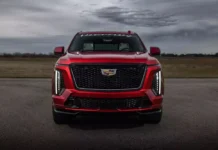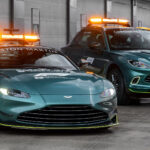Formula 1, also known as F1, is the premier open-wheel racing championship recognized by the Fédération Internationale de l’Automobile (FIA), the international governing body for motorsport. The term “formula” refers to the set of regulations that all participants and cars must adhere to.
When discussing the history of Formula 1 racing, it’s impossible not to mention the various regulations that have evolved over the span of 62 years, from 1950 to 2012, which govern technology, engines, and racing rules.
1950-52
The engine capacity for naturally aspirated engines was limited to 4.5 liters, while supercharged engines were limited to 1.5 liters. The race distance was shortened from 500 km to 300 km or a minimum of 3 hours.
1952-53
Racing was conducted according to the Formula 2 regulations.
1954-58
The engine capacity was specified as 750 cc for supercharged engines and 2.5 liters for non-supercharged engines. The race distance was set at 500 km or a minimum of 3 hours.
1958-60
The use of pure aviation fuel was prohibited, and the octane rating was specified between 100 and 139. The driving time was reduced to 2 hours or a minimum of 300 km and a maximum of 500 km.
1961
The engine capacity was limited to 1.5 liters, and supercharged engines were banned. The minimum weight limit was set at 450 kg, with an octane rating limit of 100. Fuel tanks had to meet safety regulations similar to those for airplanes.
1966
Naturally aspirated engines with a capacity of 3 liters and turbocharged engines with a capacity of 1.5 liters were allowed, with a minimum weight of 500 kg.
1967
Mandatory safety belts and driver’s blood type on the one-piece jumpsuit.
1968
The introduction of the first Bell helmet.
1969
Ban on aerodynamic devices and Lotus’ four-wheel drive transmission.
1970
Requirement for a fire extinguisher in the car.
1971
Introduction of Goodyear’s slick tires and Lotus’ turbocharged engine.
1976
Debut of Lotus’ wing car concept and Tyrrell Racing’s six-wheeler.
1977
Renault’s 1.5-liter turbocharged engine, Michelin’s round-profile tires, and the introduction of telemetry.
1981
McLaren and Lotus introduced carbon fiber cockpits, and Lotus implemented a computer-controlled suspension system.
1984
Ban on refueling during races, with a fuel limit of 220 liters.
1986
Fuel limit for turbocharged engines reduced to 195 liters. The Benetton-BMW had the most powerful car with 1,359 horsepower.
1987
Admission of naturally aspirated engines with a capacity of 3.5 liters and maximum tire width of 30.5 cm (12 inches) at the front and 57.72 cm (18 inches) at the rear.
1988
Fuel limit reduced to 150 liters, and turbocharged engines had a pressure limit of 2.5 bar.
1989
Ban on turbocharged engines. Renault introduced pneumatic valves for the first time.
1992
Ban on “designer fuel,” only allowing fuel close to normal (with a maximum octane rating of 102 and maximum oxygen content of 3.7%).
1993
Tire width limit reduced to 29 cm for both front and rear tires.
1994
Ban on electronic aids such as ABS and active suspension but allowed refueling during races.
1995
Engine capacity limit reduced to 3.0 liters.
1998
Ban on slick tires and introduction of grooved tires (3 grooves for front tires and 4 grooves for rear tires).
1999
Uniform 4 grooves for both front and rear tires.
2004
Prohibition on changing the engine during a race week.
2005
Prohibition on changing tires during races, and engines had to run throughout a race week.
2006
Introduction of 8-liter V8 engines instead of 3-liter V10s, which also had to run throughout a race week without replacements, resulting in a reduction in horsepower from approximately 900 to 700.
2007
All teams were required to use tires from a single manufacturer, Bridgestone. The maximum test mileage increased to 30,000 km per year per team, and pre-qualifying practice time was extended to 90 minutes (previously 60 minutes).
2011
Ban on double diffusers and F-Duct systems. Pirelli replaced Bridgestone as the tire supplier. The rear wing became adjustable. The Kinetic Energy Recovery System (KERS) was allowed but not mandatory. Any car in Q1 with a lap time greater than 107% of the fastest lap time would be excluded from the race. “Team orders” were permitted. The minimum car weight increased to 640 kg.
Source: TTTÐ





















































